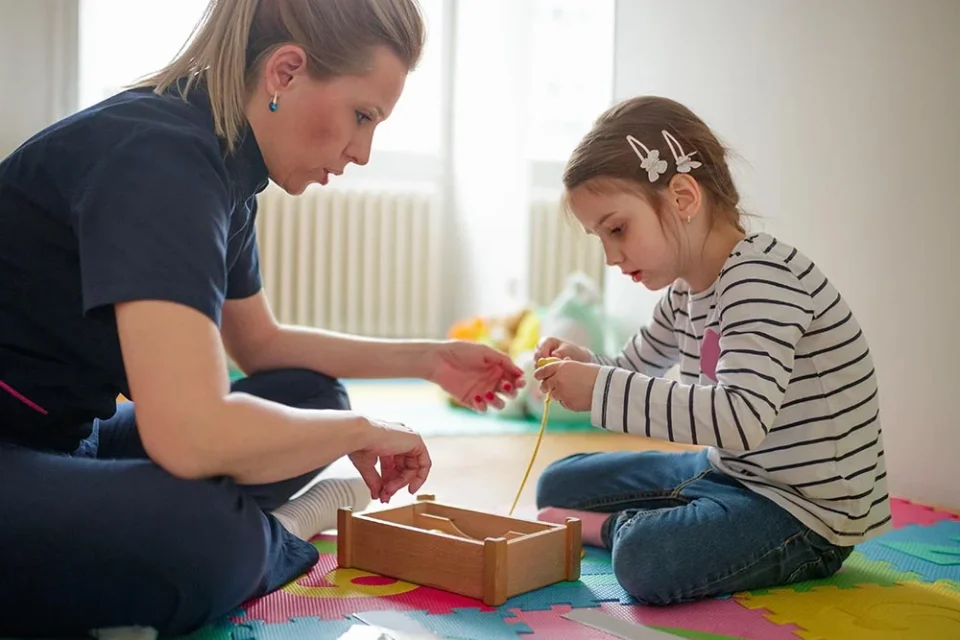When it comes to your baby’s development, early intervention can make all the difference, especially for those born with birth injuries or who may be at risk of developmental delays. Movement activities and physical therapy provide a foundation for babies to grow strong, reach milestones, and overcome challenges. For babies with conditions like cerebral palsy, early intervention isn’t just beneficial—it’s essential. Research shows that approximately 45% of children with cerebral palsy also have learning disabilities, making early therapeutic support crucial in both physical and cognitive development.
In this article, we will explore the importance of early intervention and specific movement activities that can support your baby’s development. We will also provide guidance on how to get started and how these activities can positively affect long-term development.
Table of Contents
The Importance of Early Intervention
Early intervention refers to the therapies and services provided to babies and young children who have, or are at risk for, developmental delays or disabilities. These services are designed to help children reach important milestones, such as crawling, walking, and grasping objects. For babies with cerebral palsy, a condition that affects movement, balance, and muscle tone, early physical therapy can be particularly valuable.
Cerebral palsy is one of the most common motor disabilities in childhood, often caused by birth injuries or brain damage that occurs before, during, or shortly after birth. Early diagnosis and intervention can significantly improve a child’s ability to develop motor skills. According to Cerebral Palsy Guidance, physical therapy is a key component in managing symptoms and promoting independence in children with cerebral palsy.
Movement Activities to Support Development
Here are some of the most effective movement activities for babies, whether they are neurotypical or have a condition like cerebral palsy.
1. Tummy Time
One of the most foundational activities for any baby, tummy time strengthens the neck, shoulders, arms, and core muscles. By laying your baby on their stomach for short periods, you encourage them to lift their head, improving head control. This activity is especially important for babies with cerebral palsy, as it helps them develop the strength needed for sitting, crawling, and other milestones.
Tummy time is recommended by many health professionals, including the American Academy of Pediatrics, as it helps prevent conditions like plagiocephaly (flat head syndrome) while promoting motor skill development.
2. Assisted Rolling
Assisted rolling exercises help babies build core strength and develop the ability to shift their weight—a precursor to crawling. Gently guiding your baby to roll from their back to their stomach and vice versa engages their torso and leg muscles, which are essential for future mobility.
In children with cerebral palsy, rolling is often delayed, but consistent practice can help them achieve this milestone. You can learn more about rolling and its importance from BabyCenter.
3. Supported Sitting
When your baby is able to sit with support, you can encourage reaching activities that promote balance and coordination. Placing toys just out of their reach encourages them to stretch and strengthen their core and arm muscles. For children with cerebral palsy, supported sitting also aids in the development of postural control and body awareness, both of which are often affected by the condition.
Sitting with support is an essential skill that sets the stage for future motor development, such as crawling and walking.
4. Water Therapy
Water therapy, also known as hydrotherapy, is an excellent option for babies with motor challenges. The buoyancy of water supports the baby’s body, allowing them to move more freely while reducing the stress on their muscles and joints. Water provides natural resistance, which can help strengthen muscles without causing strain.
Hydrotherapy is often recommended for babies with cerebral palsy because it allows them to experience movement in a way they may not be able to on land. You can find more information on the benefits of water therapy from the National Institutes of Health.
5. Baby Massage and Stretching
Gentle massage and stretching exercises can promote flexibility, improve circulation, and reduce muscle stiffness. For babies with cerebral palsy, who may experience spasticity (tight or stiff muscles), regular stretching can improve comfort and prevent muscle contractures.
Massage can also serve as a calming activity that enhances parent-child bonding, which is critical for emotional development.
Long-term Benefits of Early Movement Activities
Early movement activities can provide lasting benefits for your child’s physical and cognitive development. These benefits are especially pronounced for children with birth injuries or conditions like cerebral palsy. Here are some key advantages:
- Improved Muscle Tone and Strength: Early physical therapy can help balance weak and tight muscles, promoting better motor control. For children with cerebral palsy, targeted therapy can prevent muscle contractures and joint deformities, which are common as the child grows.
- Enhanced Cognitive Development: Physical activity stimulates brain growth and development. Babies who engage in movement activities are more likely to explore their environment, develop problem-solving skills, and reach cognitive milestones.
- Greater Independence: By building strength and coordination early on, children with cerebral palsy or other developmental challenges can gain more independence as they grow. Early intervention therapies, such as those highlighted by Early Intervention Foundation, often lead to improved mobility, communication, and social skills.
- Emotional Well-being: Physical activity is also crucial for emotional development. Babies who feel empowered to move and explore their environment tend to have higher self-esteem and experience less frustration.
Early intervention is a powerful tool in supporting your baby’s development, particularly for children with birth injuries or developmental delays. Through simple yet effective movement activities like tummy time, assisted rolling, and water therapy, you can help your baby build the strength, coordination, and motor skills needed for lifelong health and independence.
If your baby has been diagnosed with cerebral palsy or another birth injury, early physical therapy can make a significant difference in their quality of life.

